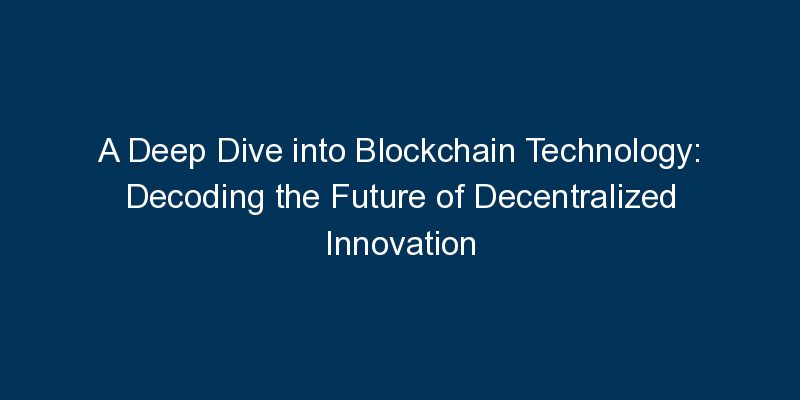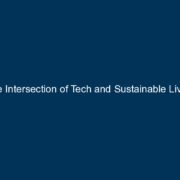Introduction
Blockchain technology, once synonymous with cryptocurrencies, has evolved into a revolutionary force with applications spanning across industries. In this comprehensive exploration, we delve into the intricacies of blockchain, unraveling its core concepts, applications, and the transformative impact it holds on the future of decentralized innovation.
Understanding the Fundamentals of Blockchain
Defining Blockchain Technology
At its essence, blockchain is a decentralized, distributed ledger that records transactions across a network of computers. Each transaction, or “block,” is linked to the previous one, forming a chain. This structure ensures transparency, security, and immutability of the recorded data.
Decentralization and Distributed Ledger
Blockchain operates on a decentralized network, eliminating the need for a central authority. The distributed ledger, maintained by multiple nodes, ensures that no single entity has control over the entire system. This decentralization enhances security and resilience.
Core Components of Blockchain
Cryptographic Hash Functions
Blockchain relies on cryptographic hash functions to secure data. Each block contains a unique hash, and any alteration to the data would require changing the hash, making it a tamper-evident feature.
Consensus Mechanisms
Consensus mechanisms are protocols that ensure all nodes in the network agree on the state of the blockchain. Proof of Work (PoW) and Proof of Stake (PoS) are common consensus mechanisms, each with its own advantages and limitations.
Smart Contracts
Smart contracts are self-executing contracts with the terms of the agreement directly written into code. They automate and enforce contractual agreements, reducing the need for intermediaries and enhancing efficiency.
Applications Across Industries
Cryptocurrencies and Financial Transactions
Blockchain’s initial application was in the creation of cryptocurrencies like Bitcoin. It enables secure and transparent financial transactions, eliminating the need for intermediaries like banks.
Supply Chain Management
Blockchain brings transparency and traceability to supply chains. Each step in the supply chain, from manufacturing to delivery, can be recorded on the blockchain, reducing fraud and ensuring product authenticity.
Healthcare Data Management
In healthcare, blockchain ensures the secure and interoperable management of patient data. Patients have greater control over their medical records, and healthcare providers can access accurate and up-to-date information.
Challenges and Considerations
Scalability Issues
As blockchain networks grow, scalability becomes a challenge. Traditional blockchains face limitations in processing transactions quickly and cost-effectively. Solutions like layer 2 scaling and sharding are being explored to address this issue.
Regulatory Landscape
The regulatory environment surrounding blockchain is still evolving. Different jurisdictions have varying approaches, and regulatory clarity is crucial for widespread adoption, especially in industries with stringent compliance requirements.
The Future of Blockchain Technology
Integration with Emerging Technologies
Blockchain is increasingly integrated with other emerging technologies, such as Artificial Intelligence (AI) and the Internet of Things (IoT). This convergence creates synergies that can revolutionize various industries.
Blockchain in Web 3.0
Web 3.0 envisions a decentralized internet, and blockchain is a fundamental component of this vision. Blockchain’s transparency and trustless nature align with the principles of Web 3.0, reshaping the digital landscape.
Conclusion
As we navigate the complexities of the digital age, blockchain technology stands out as a beacon of innovation, offering solutions to age-old challenges of trust, security, and transparency. Its applications extend far beyond cryptocurrencies, touching every facet of our interconnected world.
Embracing the potential of blockchain requires a nuanced understanding of its principles and a commitment to overcoming challenges. As we look to the future, blockchain’s role in decentralizing innovation and reshaping industries is undeniable. The journey into the depths of blockchain technology is an exploration of a transformative force that promises to redefine the way we interact, transact, and trust in the digital realm.



















Comments